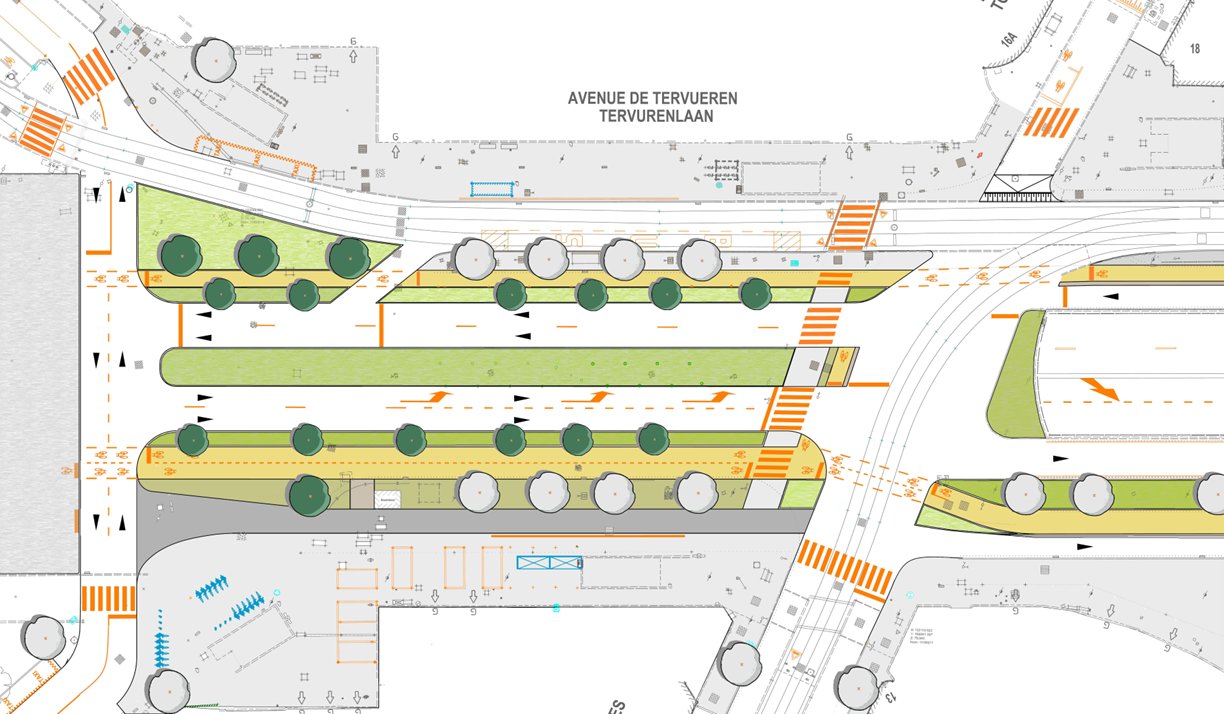Following a long and wide-ranging consultation process in which locals voiced their anger, Brussels Mobility has requested a permit to develop one of the most important axes into the city.
Avenue de Tervueren, sometimes referred to as "the Champs Élysées of Brussels", is due for redevelopment. Works will focus on the busiest section: from the Square Léopold II to the entrance to the Parc du Cinquantenaire, leading up to its iconic "Arc du Triomphe" style gate.
Three months ago, the plans to transform what is currently considered an "urban motorway", were made public after a presentation by the Brussels Government. However, the initial proposals were met with anger from locals, especially regarding the duration of the works.
Brussels Mobility has now submitted a permit request to go ahead with the project, though it acknowledged that this has followed a long and wide-ranging consultation process. "Democratic processes sometimes take time. I am very pleased that the plans to transform one of the most beautiful avenues in Brussels have now been submitted," said Elke Van den Brandt, Brussels Mobility Minister.
Courageous compromise
The aim is to increase road safety by clarifying the zones for the different transport modes, completing missing links in the cycling network, and improving pedestrian accessibility as well as reducing conflict between the two groups of vulnerable road users.
Two one-way cycle lanes are planned on either side of the existing tree lines, and three additional pedestrian-cyclist crossings will be added, protected by traffic lights.

The illustration highlights what section of the large road will be tackled. Credit: Brussels Mobility
Further greening will be added with a central road verge with trees separating the 2x2 lanes of traffic. 79 trees will be planted and almost a hectare of additional green space will be created in this way. However, unlike projects around the region that are taking away space from cars, the project will maintain 98% of the parking spaces.
"It is time for all road users and residents to have a much greener and more pleasant avenue to live in, one that is easier to cross and safer for cyclists, without any change to the road's car functions," Van den Brandt said on Friday. "A courageous compromise for all parties."
The project also envisages redesigning two key intersections, at Mérode and Montgomery.

The changes at Merode. Credit: Brussels Mobility
The roundabout at Mérode will be removed, making way for a traffic-light junction. The separated lane for buses, removed in the 2000s, will be reintroduced, while cycle and pedestrian traffic, which currently share the pavement, will be separated.
Meanwhile, the focus at the Montgomery roundabout is making it greener. The central fountain will be restored, while the green space around this centrepiece will be slightly reduced to add additional green spaces around the perimeter of the traffic section.
Related News
- Renovation of Brussels centre continues with creation of intimate square
- Works on Schuman Roundabout begin while locals continue to push back
Benches and flowerbeds will also be integrated here, and a densely planted buffer zone will separate these from the pedestrian areas and the cycle lane. This makes the different parts of the roundabout much more easily accessible for pedestrians, with a time saving of 20%, according to Brussels Mobility. For cars, the three lanes tested since the spring of 2022 will be maintained.
The next step in the process is the public survey which Vincent De Wolf, mayor of Etterbeek, said will provide an opportunity to refine the contours of the project. "This will have to answer the legitimate questions of residents who expect several changes that they requested in September."

